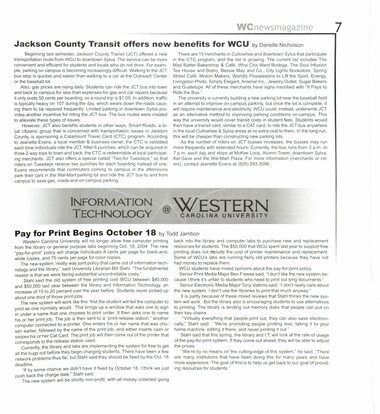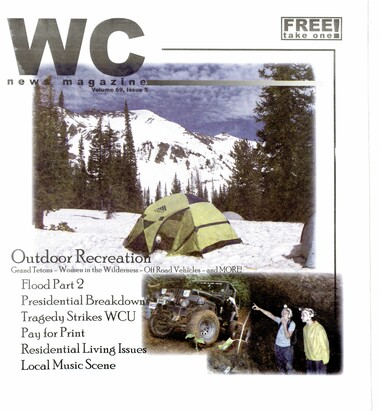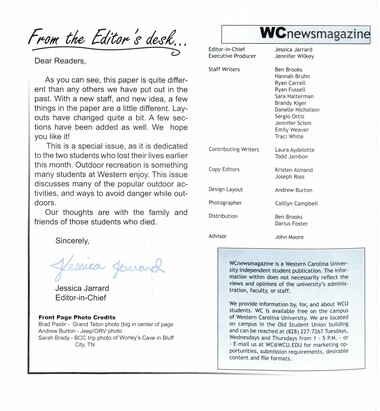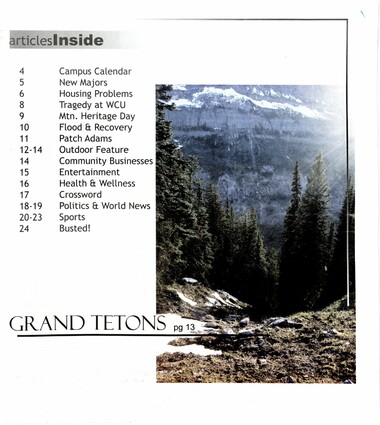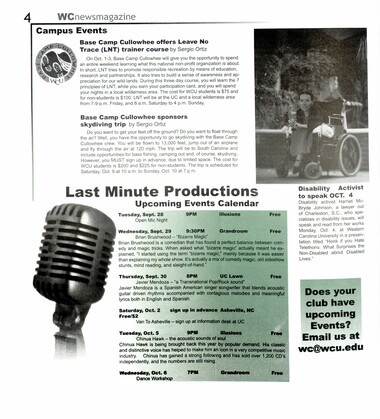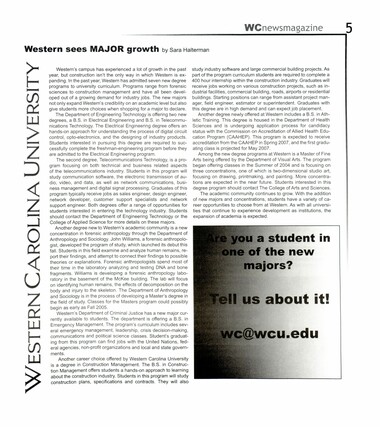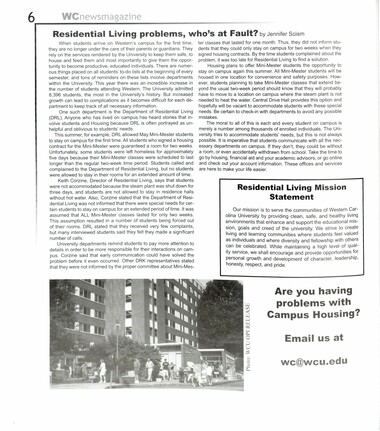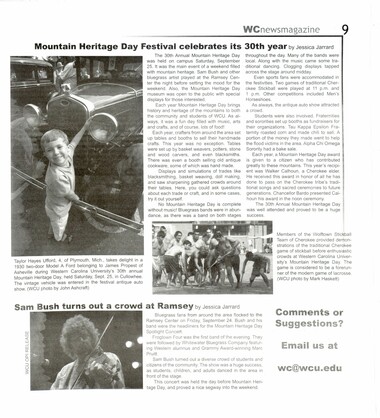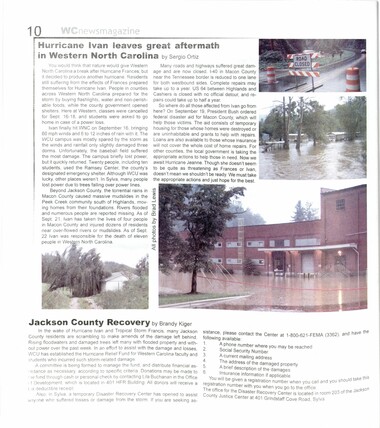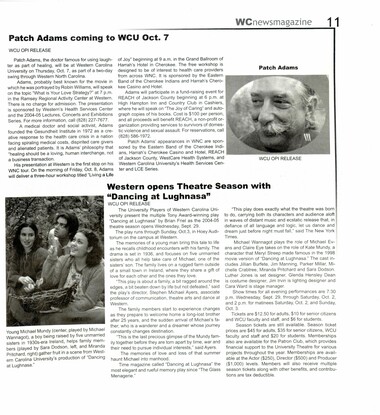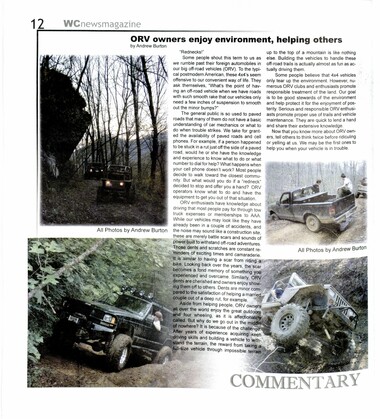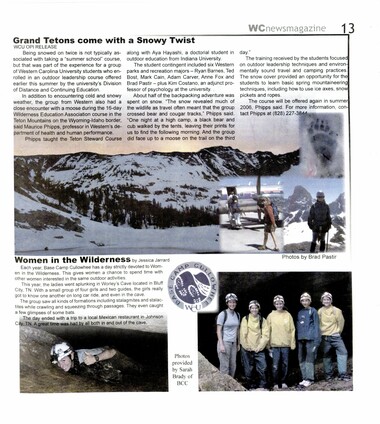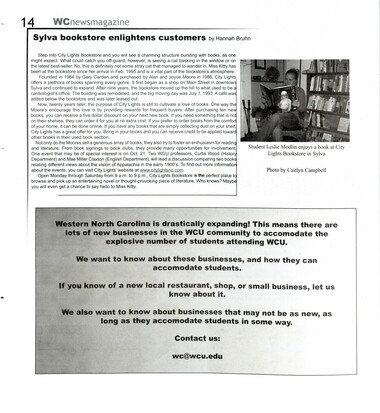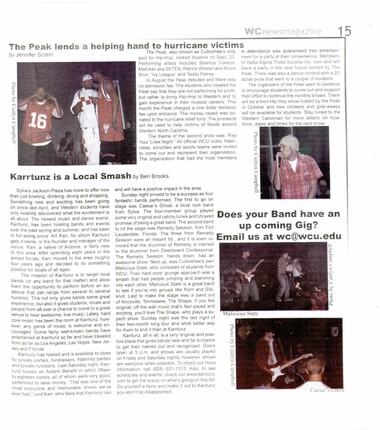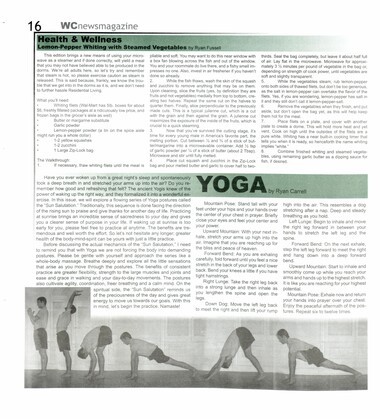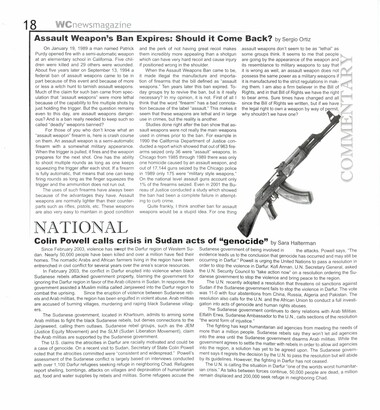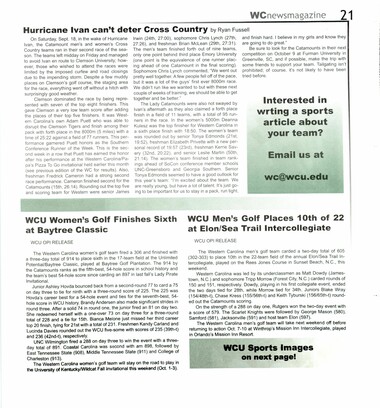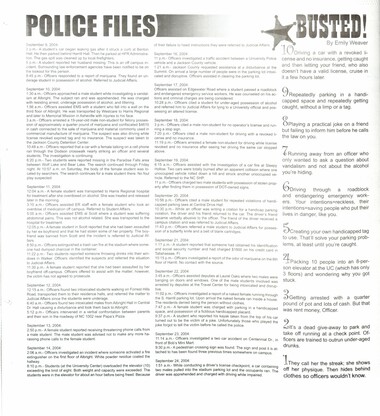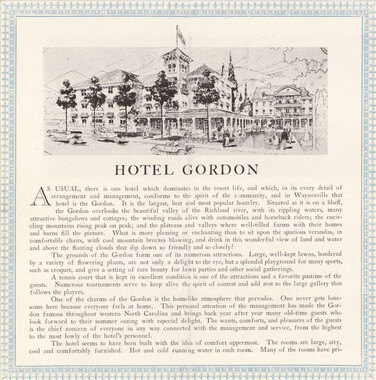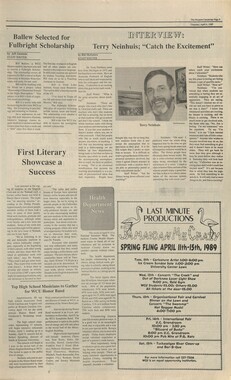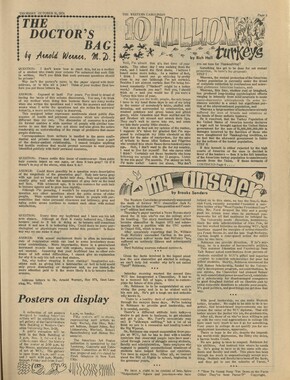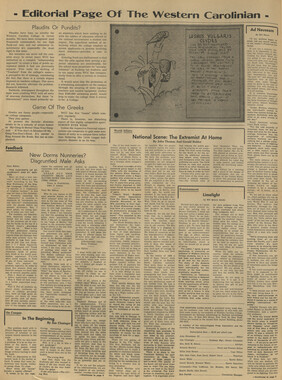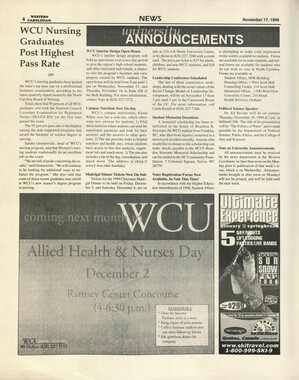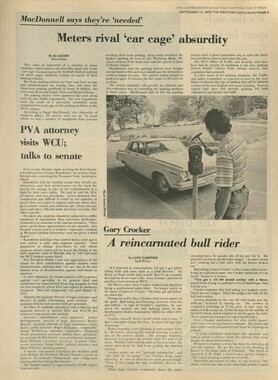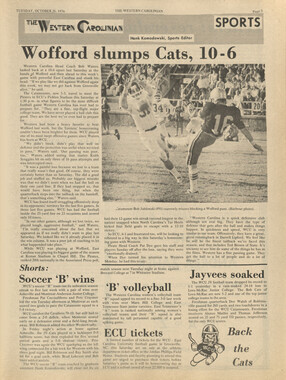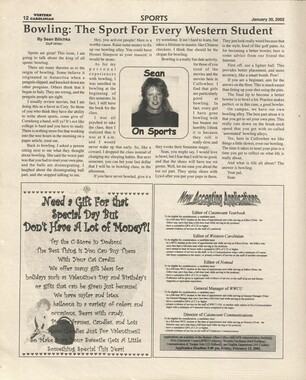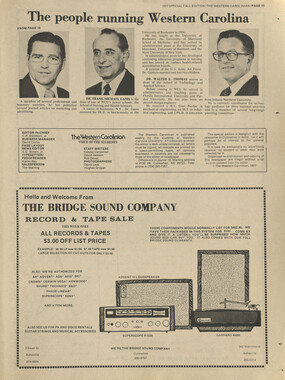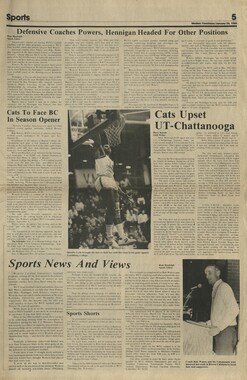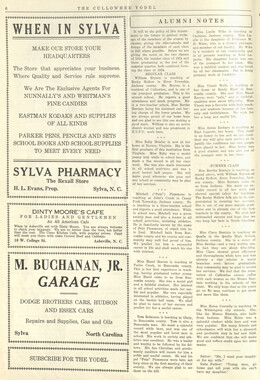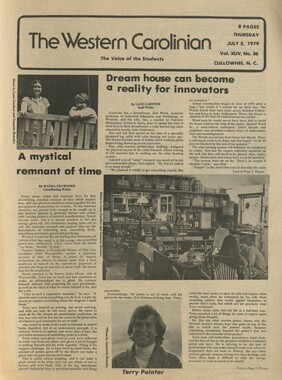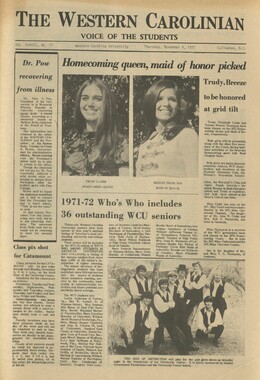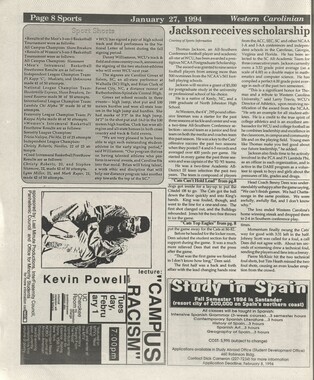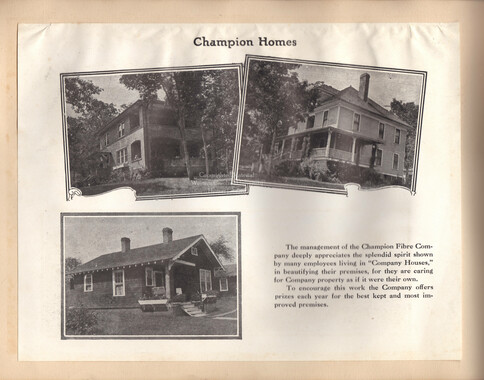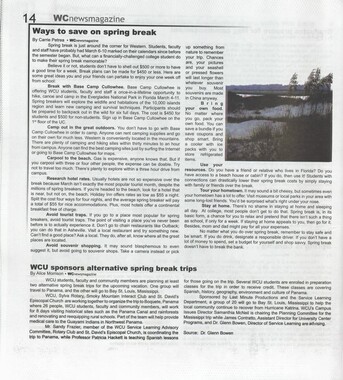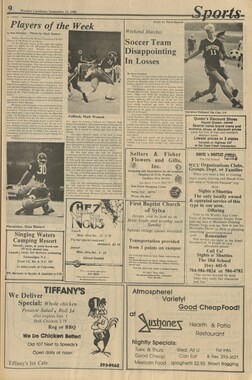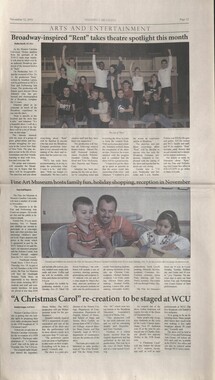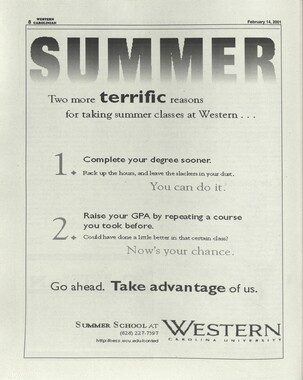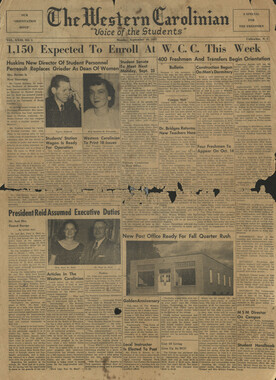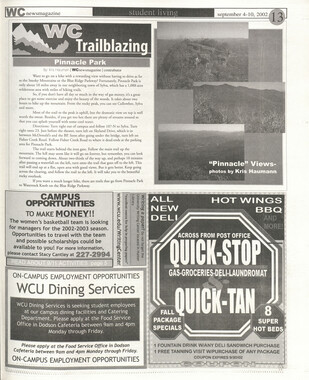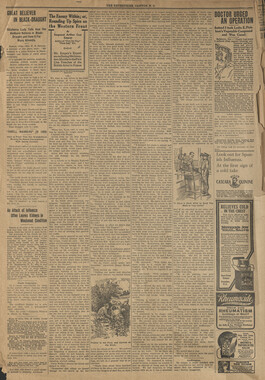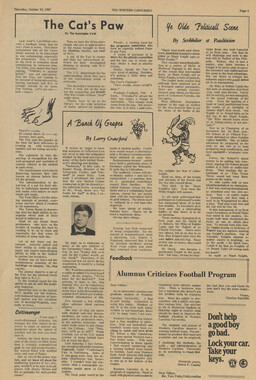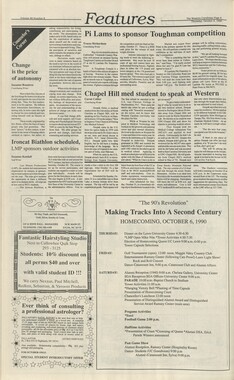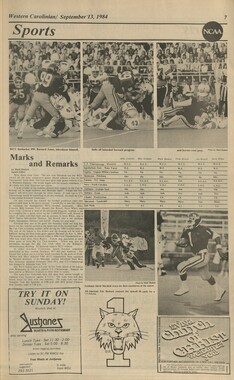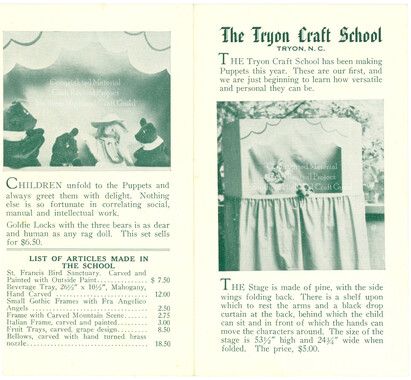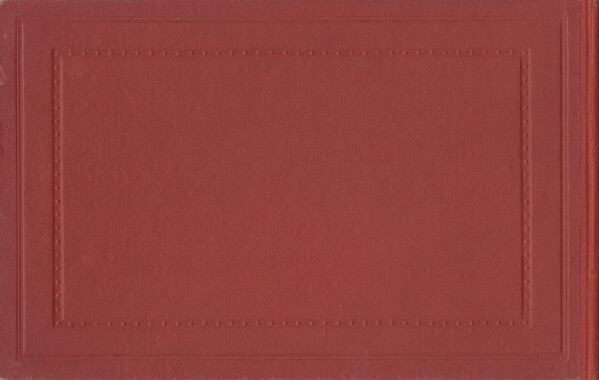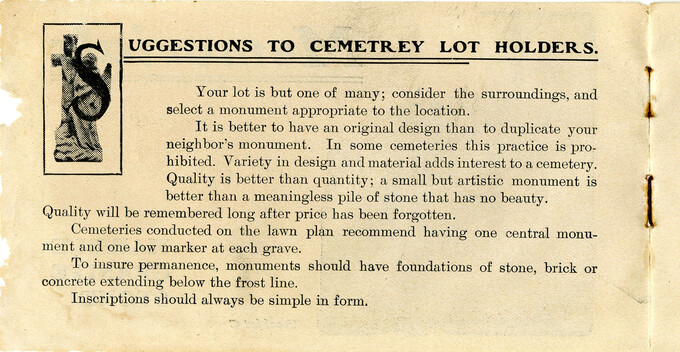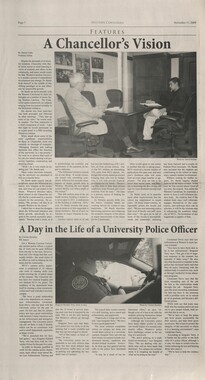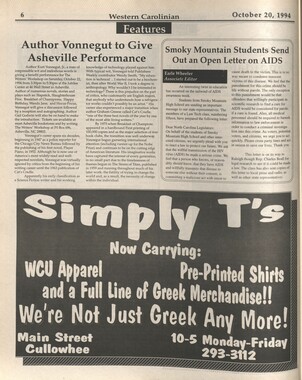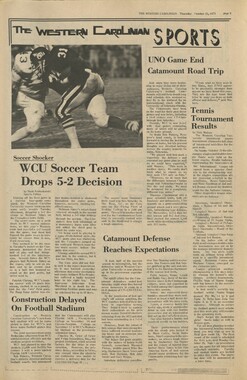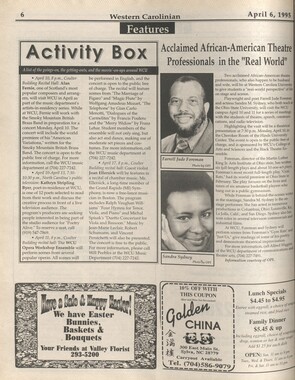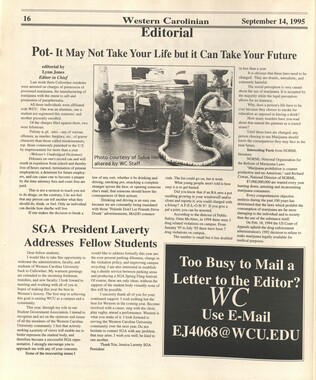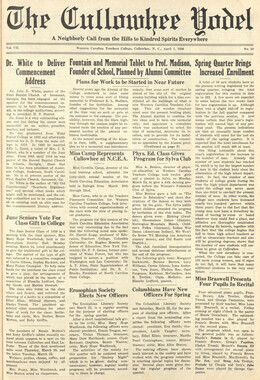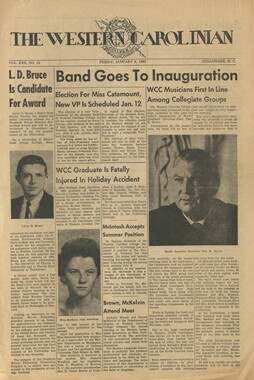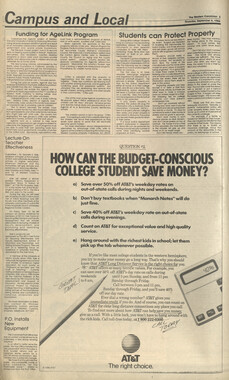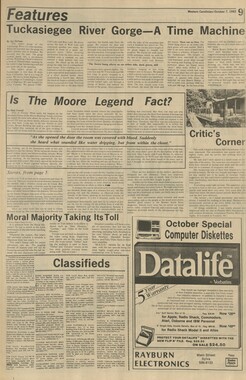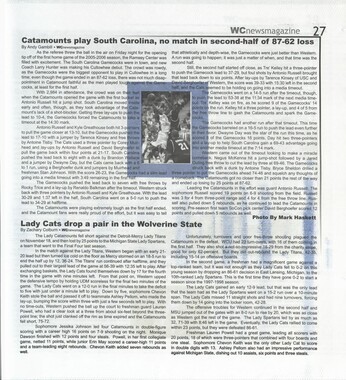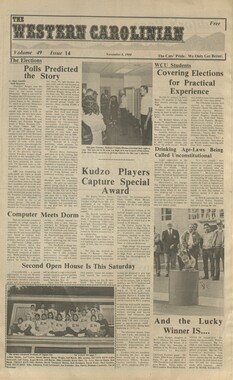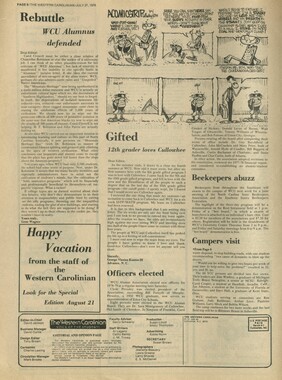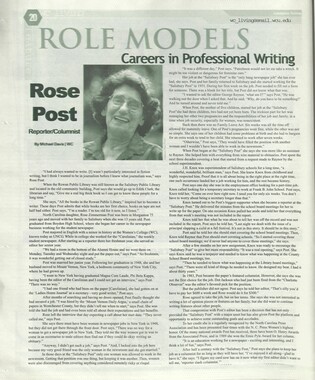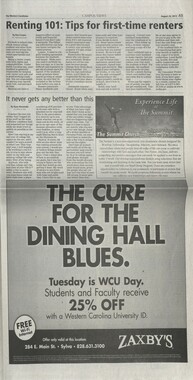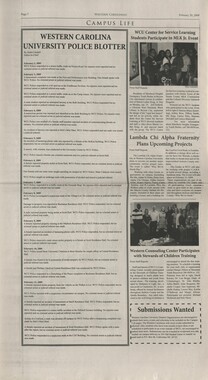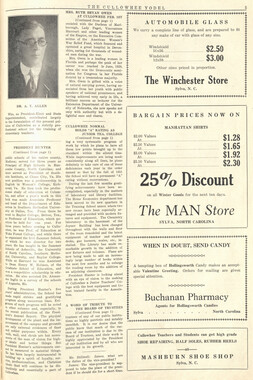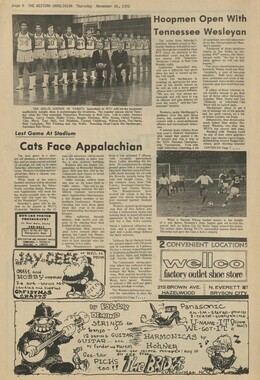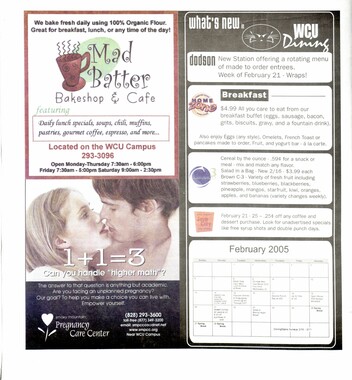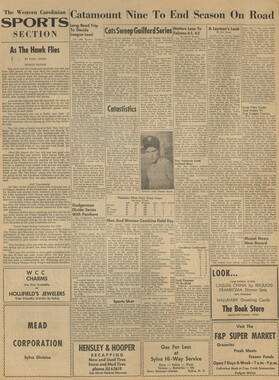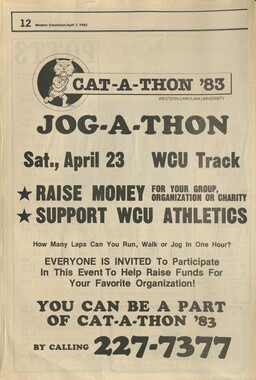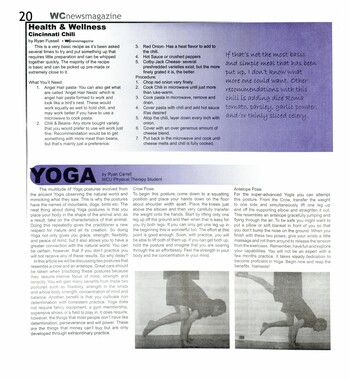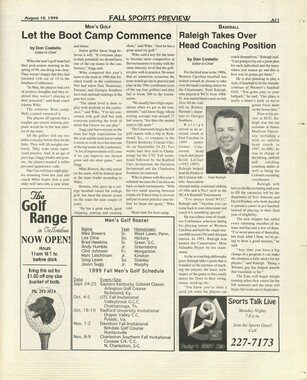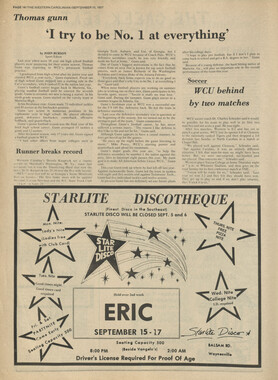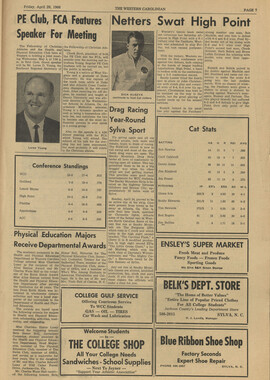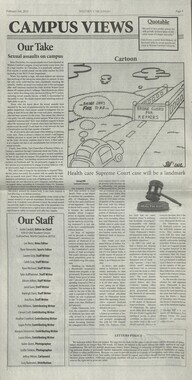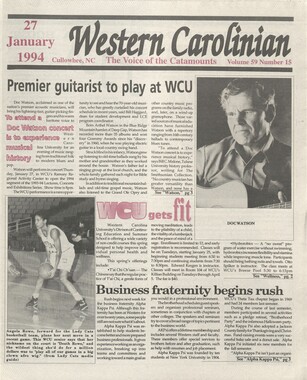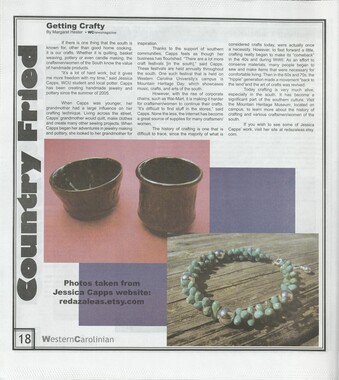Western Carolina University (20)
View all
- Canton Champion Fibre Company (2308)
- Cherokee Traditions (291)
- Civil War in Southern Appalachia (165)
- Craft Revival (1942)
- Great Smoky Mountains - A Park for America (2946)
- Highlights from Western Carolina University (430)
- Horace Kephart (941)
- Journeys Through Jackson (159)
- LGBTQIA+ Archive of Jackson County (85)
- Oral Histories of Western North Carolina (314)
- Picturing Appalachia (6873)
- Stories of Mountain Folk (413)
- Travel Western North Carolina (160)
- Western Carolina University Fine Art Museum Vitreograph Collection (129)
- Western Carolina University Herbarium (92)
- Western Carolina University: Making Memories (738)
- Western Carolina University Publications (2491)
- Western Carolina University Restricted Electronic Theses and Dissertations (146)
- Western North Carolina Regional Maps (71)
- World War II in Southern Appalachia (131)
University of North Carolina Asheville (6)
View all
- Allanstand Cottage Industries (62)
- Appalachian National Park Association (53)
- Bennett, Kelly, 1890-1974 (1463)
- Berry, Walter (76)
- Brasstown Carvers (40)
- Carver, George Washington, 1864?-1943 (26)
- Cathey, Joseph, 1803-1874 (1)
- Champion Fibre Company (233)
- Champion Paper and Fibre Company (297)
- Cherokee Indian Fair Association (16)
- Cherokee Language Program (22)
- Crowe, Amanda (40)
- Edmonston, Thomas Benton, 1842-1907 (7)
- Ensley, A. L. (Abraham Lincoln), 1865-1948 (275)
- Fromer, Irving Rhodes, 1913-1994 (70)
- George Butz (BFS 1907) (46)
- Goodrich, Frances Louisa (120)
- Grant, George Alexander, 1891-1964 (96)
- Heard, Marian Gladys (60)
- Kephart, Calvin, 1883-1969 (15)
- Kephart, Horace, 1862-1931 (313)
- Kephart, Laura, 1862-1954 (39)
- Laney, Gideon Thomas, 1889-1976 (439)
- Masa, George, 1881-1933 (61)
- McElhinney, William Julian, 1896-1953 (44)
- Niggli, Josephina, 1910-1983 (10)
- North Carolina Park Commission (105)
- Osborne, Kezia Stradley (9)
- Owens, Samuel Robert, 1918-1995 (11)
- Penland Weavers and Potters (36)
- Roberts, Vivienne (15)
- Roth, Albert, 1890-1974 (142)
- Schenck, Carl Alwin, 1868-1955 (1)
- Sherrill's Photography Studio (2565)
- Southern Highland Handicraft Guild (127)
- Southern Highlanders, Inc. (71)
- Stalcup, Jesse Bryson (46)
- Stearns, I. K. (213)
- Thompson, James Edward, 1880-1976 (226)
- United States. Indian Arts and Crafts Board (130)
- USFS (683)
- Vance, Zebulon Baird, 1830-1894 (1)
- Weaver, Zebulon, 1872-1948 (58)
- Western Carolina College (230)
- Western Carolina Teachers College (282)
- Western Carolina University (2008)
- Western Carolina University. Mountain Heritage Center (18)
- Whitman, Walt, 1819-1892 (10)
- Wilburn, Hiram Coleman, 1880-1967 (73)
- Williams, Isadora (3)
- Cain, Doreyl Ammons (0)
- Crittenden, Lorraine (0)
- Rhodes, Judy (0)
- Smith, Edward Clark (0)
- Appalachian Region, Southern (2693)
- Asheville (N.C.) (1936)
- Avery County (N.C.) (26)
- Blount County (Tenn.) (195)
- Buncombe County (N.C.) (1672)
- Cherokee County (N.C.) (283)
- Clay County (N.C.) (556)
- Graham County (N.C.) (236)
- Great Smoky Mountains National Park (N.C. and Tenn.) (519)
- Haywood County (N.C.) (3569)
- Henderson County (N.C.) (70)
- Jackson County (N.C.) (4913)
- Knox County (Tenn.) (35)
- Knoxville (Tenn.) (13)
- Lake Santeetlah (N.C.) (10)
- Macon County (N.C.) (420)
- Madison County (N.C.) (215)
- McDowell County (N.C.) (39)
- Mitchell County (N.C.) (132)
- Polk County (N.C.) (35)
- Qualla Boundary (982)
- Rutherford County (N.C.) (76)
- Swain County (N.C.) (2182)
- Transylvania County (N.C.) (270)
- Watauga County (N.C.) (12)
- Waynesville (N.C.) (86)
- Yancey County (N.C.) (72)
- Aerial Photographs (3)
- Aerial Views (60)
- Albums (books) (4)
- Articles (1)
- Artifacts (object Genre) (228)
- Bibliographies (1)
- Biography (general Genre) (2)
- Cards (information Artifacts) (38)
- Clippings (information Artifacts) (191)
- Copybooks (instructional Materials) (3)
- Crafts (art Genres) (622)
- Depictions (visual Works) (21)
- Design Drawings (1)
- Drawings (visual Works) (185)
- Envelopes (73)
- Exhibitions (events) (1)
- Facsimiles (reproductions) (1)
- Fiction (general Genre) (4)
- Financial Records (12)
- Fliers (printed Matter) (67)
- Glass Plate Negatives (381)
- Guidebooks (2)
- Internegatives (10)
- Interviews (815)
- Land Surveys (102)
- Letters (correspondence) (1013)
- Manuscripts (documents) (618)
- Maps (documents) (177)
- Memorandums (25)
- Minutes (administrative Records) (59)
- Negatives (photographs) (6090)
- Newsletters (1290)
- Newspapers (2)
- Notebooks (8)
- Occupation Currency (1)
- Paintings (visual Works) (1)
- Pen And Ink Drawings (1)
- Periodicals (193)
- Personal Narratives (10)
- Photographs (12976)
- Plans (maps) (1)
- Poetry (5)
- Portraits (4568)
- Postcards (329)
- Programs (documents) (181)
- Publications (documents) (2443)
- Questionnaires (65)
- Relief Prints (26)
- Sayings (literary Genre) (1)
- Scrapbooks (282)
- Sheet Music (2)
- Slides (photographs) (402)
- Songs (musical Compositions) (2)
- Sound Recordings (796)
- Specimens (92)
- Speeches (documents) (18)
- Tintypes (photographs) (8)
- Transcripts (322)
- Video Recordings (physical Artifacts) (23)
- Text Messages (0)
- A.L. Ensley Collection (275)
- Appalachian Industrial School Records (7)
- Appalachian National Park Association Records (336)
- Axley-Meroney Collection (2)
- Bayard Wootten Photograph Collection (20)
- Bethel Rural Community Organization Collection (7)
- Blumer Collection (5)
- C.W. Slagle Collection (20)
- Canton Area Historical Museum (2110)
- Carlos C. Campbell Collection (462)
- Cataloochee History Project (64)
- Cherokee Studies Collection (4)
- Daisy Dame Photograph Album (5)
- Daniel Boone VI Collection (1)
- Doris Ulmann Photograph Collection (112)
- Elizabeth H. Lasley Collection (1)
- Elizabeth Woolworth Szold Fleharty Collection (4)
- Frank Fry Collection (95)
- George Masa Collection (173)
- Gideon Laney Collection (452)
- Hazel Scarborough Collection (2)
- Hiram C. Wilburn Papers (28)
- Historic Photographs Collection (236)
- Horace Kephart Collection (861)
- Humbard Collection (33)
- Hunter and Weaver Families Collection (1)
- I. D. Blumenthal Collection (4)
- Isadora Williams Collection (4)
- Jesse Bryson Stalcup Collection (47)
- Jim Thompson Collection (224)
- John B. Battle Collection (7)
- John C. Campbell Folk School Records (80)
- John Parris Collection (6)
- Judaculla Rock project (2)
- Kelly Bennett Collection (1482)
- Love Family Papers (11)
- Major Wiley Parris Civil War Letters (3)
- Map Collection (12)
- McFee-Misemer Civil War Letters (34)
- Mountain Heritage Center Collection (4)
- Norburn - Robertson - Thomson Families Collection (44)
- Pauline Hood Collection (7)
- Pre-Guild Collection (2)
- Qualla Arts and Crafts Mutual Collection (12)
- R.A. Romanes Collection (681)
- Rosser H. Taylor Collection (1)
- Samuel Robert Owens Collection (94)
- Sara Madison Collection (144)
- Sherrill Studio Photo Collection (2558)
- Smoky Mountains Hiking Club Collection (616)
- Stories of Mountain Folk - Radio Programs (374)
- The Reporter, Western Carolina University (510)
- Venoy and Elizabeth Reed Collection (16)
- WCU Gender and Sexuality Oral History Project (32)
- WCU Mountain Heritage Center Oral Histories (25)
- WCU Oral History Collection - Mountain People, Mountain Lives (71)
- WCU Students Newspapers Collection (1923)
- Western North Carolina Tomorrow Black Oral History Project (69)
- William Williams Stringfield Collection (2)
- Zebulon Weaver Collection (109)
- African Americans (390)
- Appalachian Trail (35)
- Artisans (521)
- Cherokee art (84)
- Cherokee artists -- North Carolina (10)
- Cherokee language (21)
- Cherokee pottery (101)
- Cherokee women (208)
- Church buildings (190)
- Civilian Conservation Corps (U.S.) (111)
- College student newspapers and periodicals (2012)
- Dams (107)
- Dance (1023)
- Education (222)
- Floods (61)
- Folk music (1015)
- Forced removal, 1813-1903 (2)
- Forest conservation (220)
- Forests and forestry (1195)
- Gender nonconformity (4)
- Great Smoky Mountains National Park (N.C. and Tenn.) (181)
- Hunting (45)
- Landscape photography (25)
- Logging (119)
- Maps (83)
- Mines and mineral resources (8)
- North Carolina -- Maps (18)
- Paper industry (38)
- Postcards (255)
- Pottery (135)
- Railroad trains (72)
- Rural electrification -- North Carolina, Western (3)
- School integration -- Southern States (2)
- Segregation -- North Carolina, Western (5)
- Slavery (5)
- Sports (452)
- Storytelling (243)
- Waterfalls -- Great Smoky Mountains (N.C. and Tenn.) (66)
- Weaving -- Appalachian Region, Southern (280)
- Wood-carving -- Appalachian Region, Southern (328)
- World War, 1939-1945 (173)
Western Carolinian (Volume 69 Number 05)
Item
Item’s are ‘child’ level descriptions to ‘parent’ objects, (e.g. one page of a whole book).
-
-
Jackson County Transit offers new benefits for WCU py Danelle Nicholson Beginning last semester, Jackson County Transit (JCT) offered a new transportation route from WCU to downtown Sylva. The service can be more convenient and efficient for students and locals who do not drive. For exam- ple, parking on campus is becoming increasingly difficult. Walking to the JCT bus stop is quicker and easier than walking to a car at the Outreach Center or the baseball lot. Also, gas prices are rising daily. Students can ride the JCT bus into town and back to campus for less than expenses for gas and car repairs because it only costs 50 cents per boarding, so a round trip is $1.00. In addition, traffic is typically heavy on 107 during the day, which wears down the roads caus- ing them to be repaved frequently. Limited parking in downtown Sylva pro- vides another incentive for riding the JCT bus. The bus routes were created to alleviate these types of issues. However, JCT also benefits students in other ways. Smart Roads, a lo- cal citizens group that is concerned with transportation issues in Jackson County, is sponsoring a Catamount Travel Card (CTC) program. According to Jeanette Evans, a local member & business owner, the CTC is validated each time individuals ride the JCT. After 6 punches, which can be acquired in three 2-way trips to town and back, the CTC is redeemable at local participat- ing merchants. JCT also offers a special called Two-for Tuesdays, so that riders on Tuesdays receive two punches for each boarding instead of one. Evans recommends that commuters coming to campus in the afternoons park their cars in the Wal-Mart parking lot and ride the JCT bus to and from campus to save gas, roads and on-campus parking. newsmagazine There are 15 merchants in Cullowhee and downtown Sylva that participate in the CTC program, and the list is growing. The current list includes The Mad Batter Bakershop & Caf, Wha Cha Want Bodega, The Soul Infusion Tea House and Bistro, Bessie May and Co., City Lights Bookstore, Spring Street Caf, Motion Makers, Worldly Possessions to Lift the Spirit, Energy, Livingston Photo, Simply Elegant, Arsenal Inc., Jewelry Outlet, Sugar Bakers and Guatelupe. All of these merchants have signs inscribed with It Pays to Ride the Bus. The university is currently building a new parking lot near the baseball field in an attempt to improve on-campus parking, but once the lot is complete, it will require maintenance and electricity. WCU could, instead, underwrite JCT as an alternative method to improving parking conditions on-campus. This way the university would cover transit costs in student fees. Students would then have a transit card, similar to a CAT card, to ride the JCT bus anywhere in the local Cullowhee & Sylva areas at no extra cost to them. In the long run, this will be cheaper than constructing new parking lots. As the number of riders on JCT busses increases, the busses may run more frequently with extended hours. Currently, the bus runs from 3 p.m. to 7 p.m. each day and stops at McKee Loop, Alumni Tower, downtown Sylva, Kel-Save and the Wal-Mart Plaza. For more information (merchants or rid- ers), contact Jeanette Evans at (828) 293-3096. Pay for Print Begins October 18 by Todd Jambon Western Carolina University will no longer allow free computer printing from the library or general purpose labs beginning Oct. 18, 2004. The new pay-for-print policy will charge individuals 8 cents per page for black-and- white copies, and 75 cents per page for color copies. The new system really was joint policy that came out of information tech- nology and the library, said University Librarian Bill Stahl. The fundamental reason is that we were facing substantial uncontrollable costs. Stahl said the old system of free printing cost WCU between $40,000 and $50,000 last year between the library and Information Technology, an increase of 15 to 20 percent over the year before. Students never picked up about one third of those print jobs. The new system will work like this: first the student will tell the computer to print as one normally would. This brings up a window that asks one to sign in under a name that one chooses to print under. It then asks one to name his or her print job. The job is then sent to a print-release station, another computer connected to a printer. One enters his or her name that was cho- sen earlier, followed by the name of the print job, and either inserts cash or swipes his or her Cat Card. The print job will then come out of the printer that corresponds to the release station used. . Currently, the library and labs are implementing the system for free to get all the bugs out before they begin charging students. There have been a few network problems thus far, but Stahl said they should be fixed by the Oct. 18 deadline. If by some chance we didn't have it fixed by October 18, | think we just push back the charge date, Stahl said. The new system will be strictly non-profit, with all money collected going back into the library and computer labs to purchase new and replacement resources for students. The $50,000 that WCU spent last year to support free printing does not include the cost of printer maintenance and replacement. Some of WCUs labs are running fairly old printers because they have not had money to replace them. WCU students have mixed opinions about the pay-for-print policy. Senior Print Media Major Ben Freese said, I don't like the new system be- cause | think its unfair to students who need to print out long documents. Senior Electronic Media Major Tony Vattimo said, | dont really care about the new system. | dont use the libraries to print that much anyway. It is partly because of these mixed reviews that Stahl thinks the new sys- tem will work. But the library also is encouraging students to use alternatives to printing. The library is lending out memory disks that people can put on their key chains. Virtually everything that people print out, they can also save electroni- cally, Stahl said. We're promoting people printing less, taking it to your home machine, editing it there, and never printing it out. Stahl said that this spring, the library and I.T. will look at the rate of usage of the pay-for-print system. If they come out ahead, they will be able to adjust the prices. We're by no means on the cutting-edge of this system, he said. There are many institutions that have been doing this for many years and have more experience. The goal of this is to help us get back to our goal of provid- ing resources for students.
Object
Object’s are ‘parent’ level descriptions to ‘children’ items, (e.g. a book with pages).
-
The Western Carolinian is Western Carolina University's student-run newspaper. The paper was published as the Cullowhee Yodel from 1924 to 1931 before changing its name to The Western Carolinian in 1933.
-
